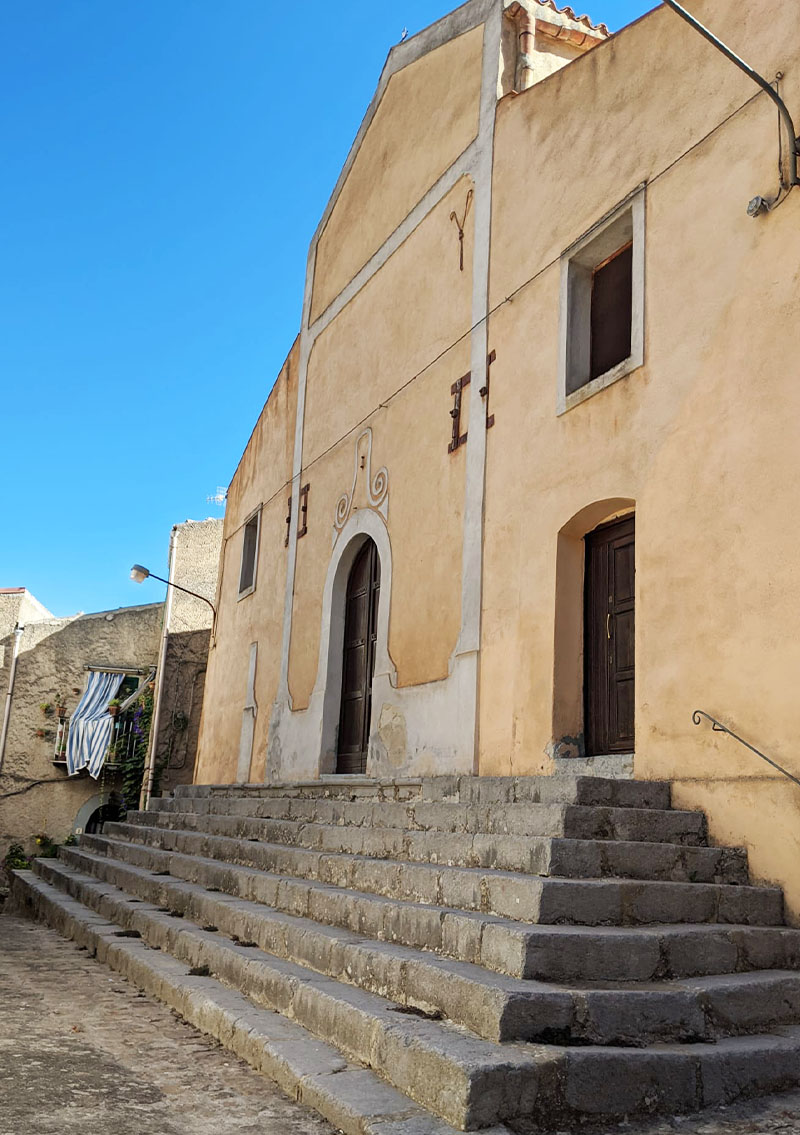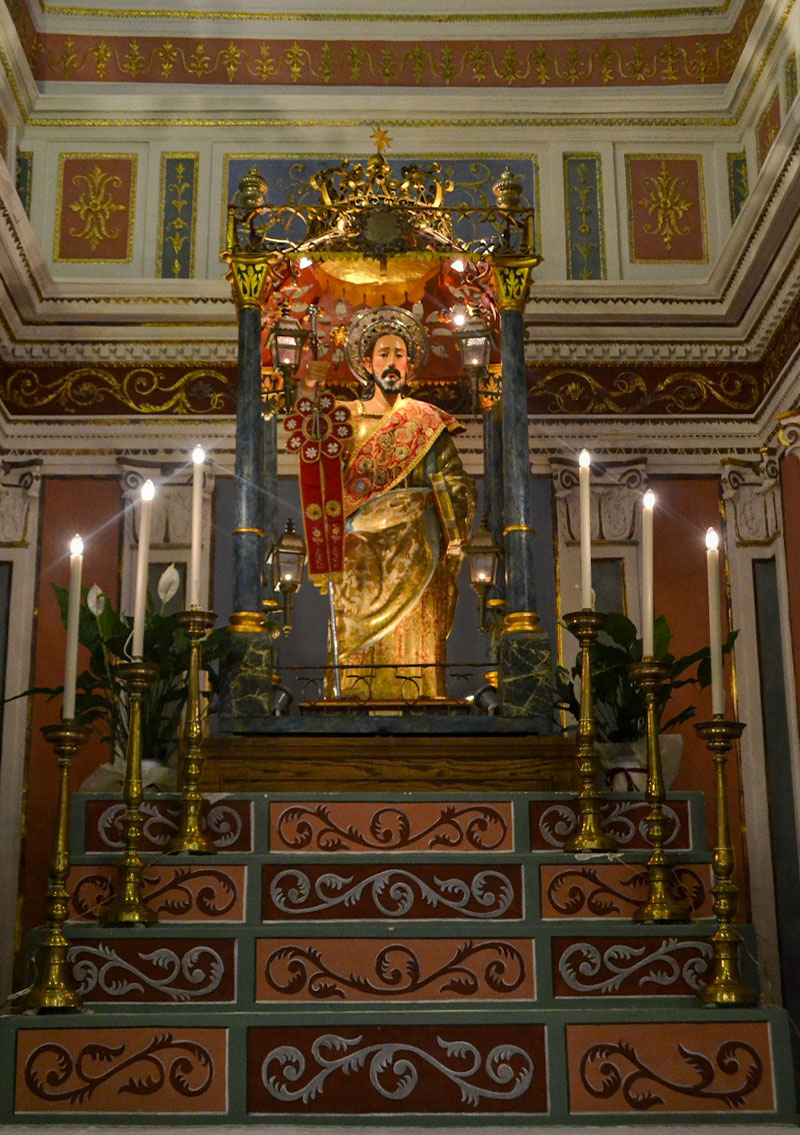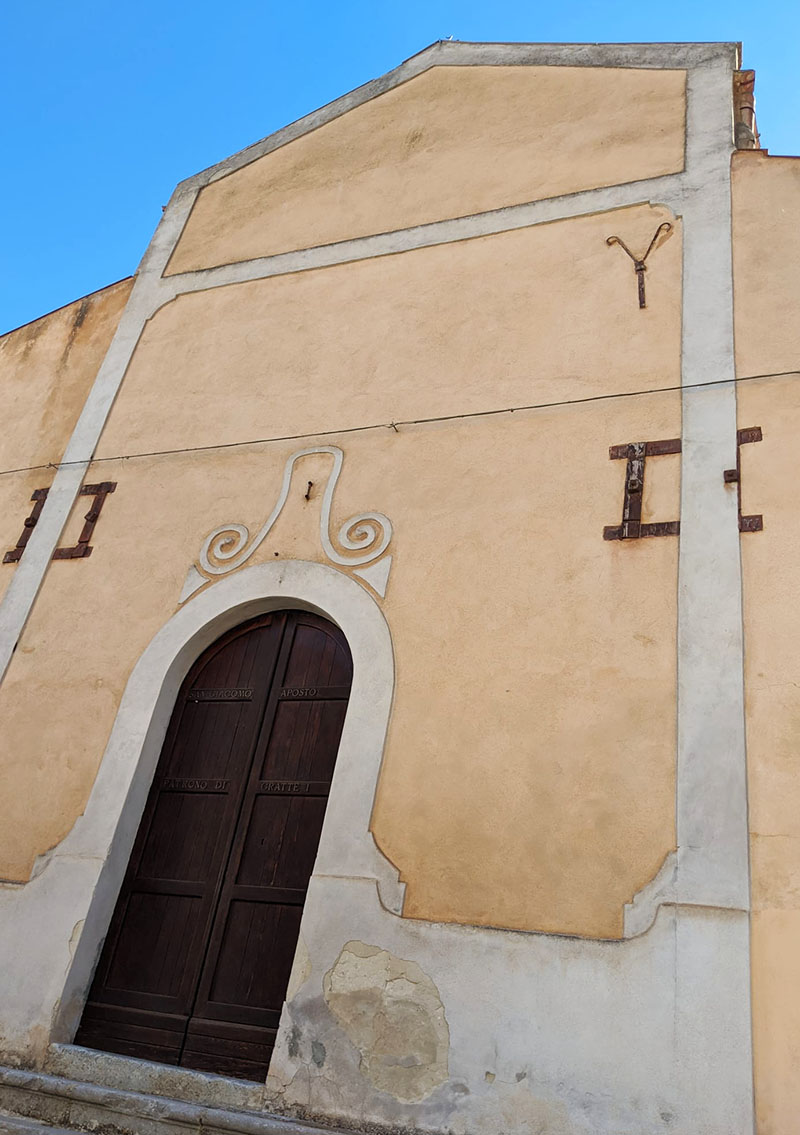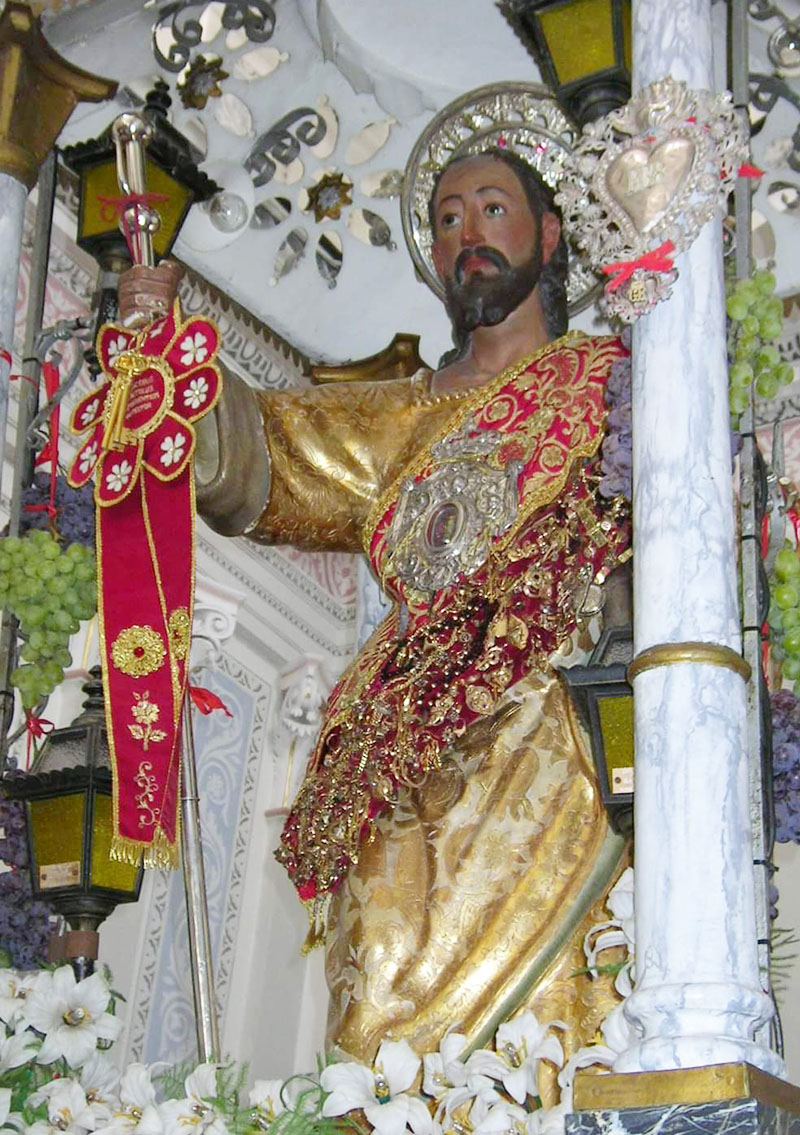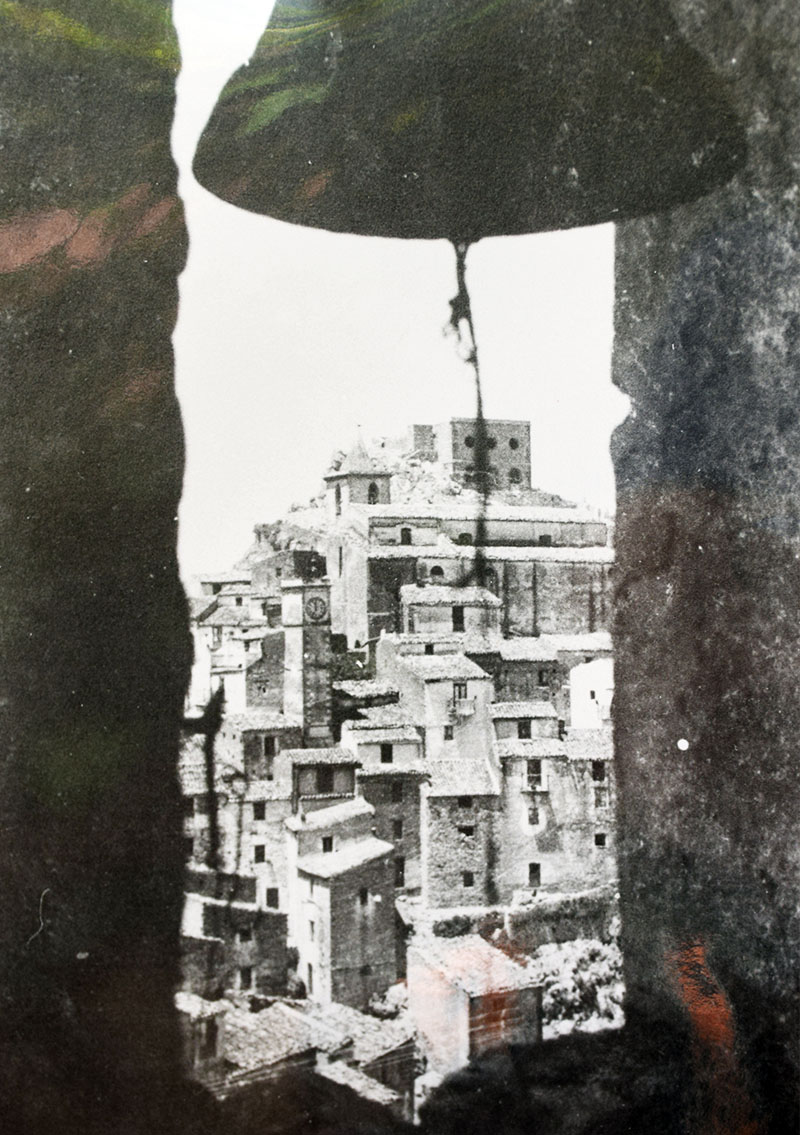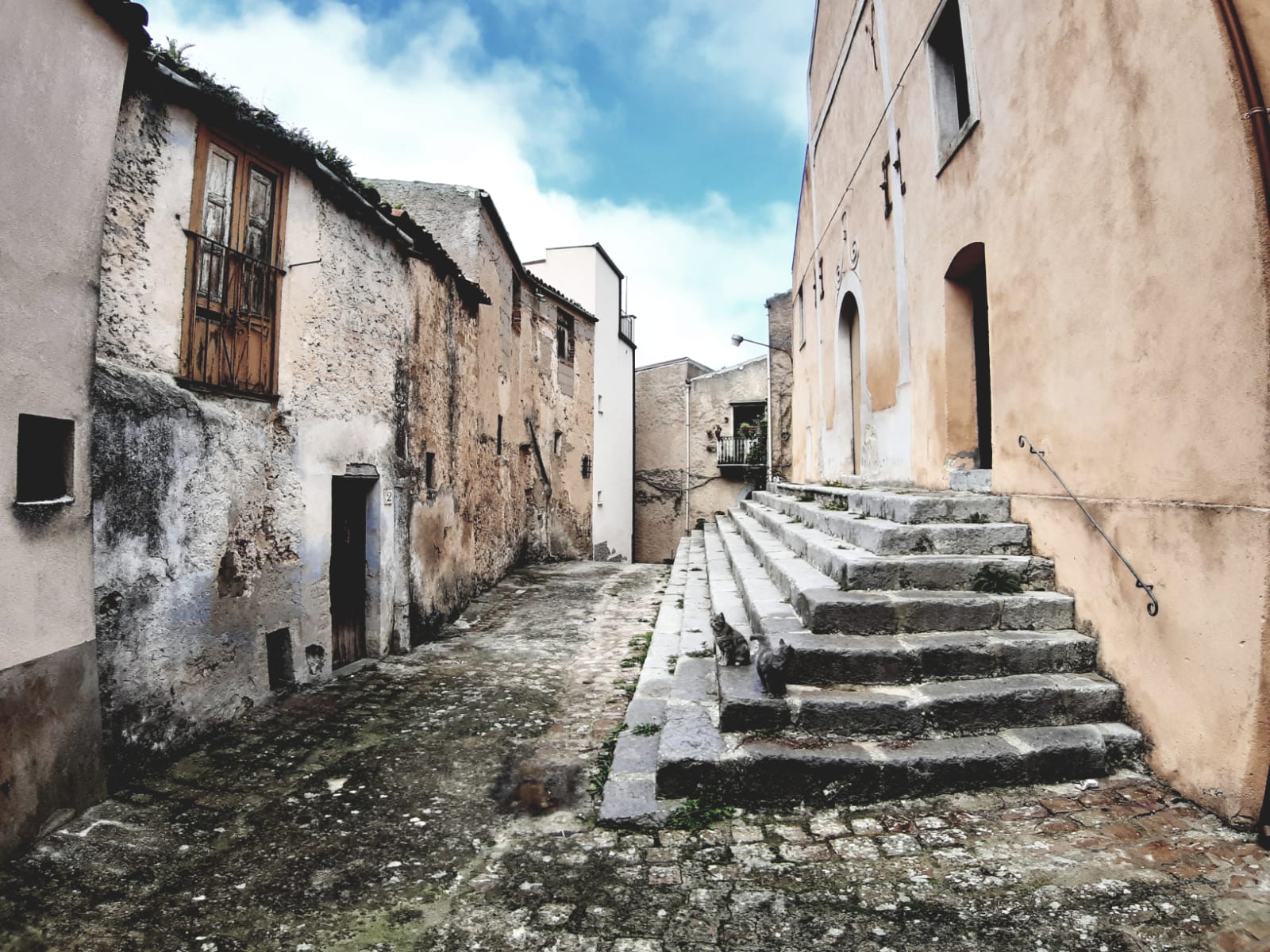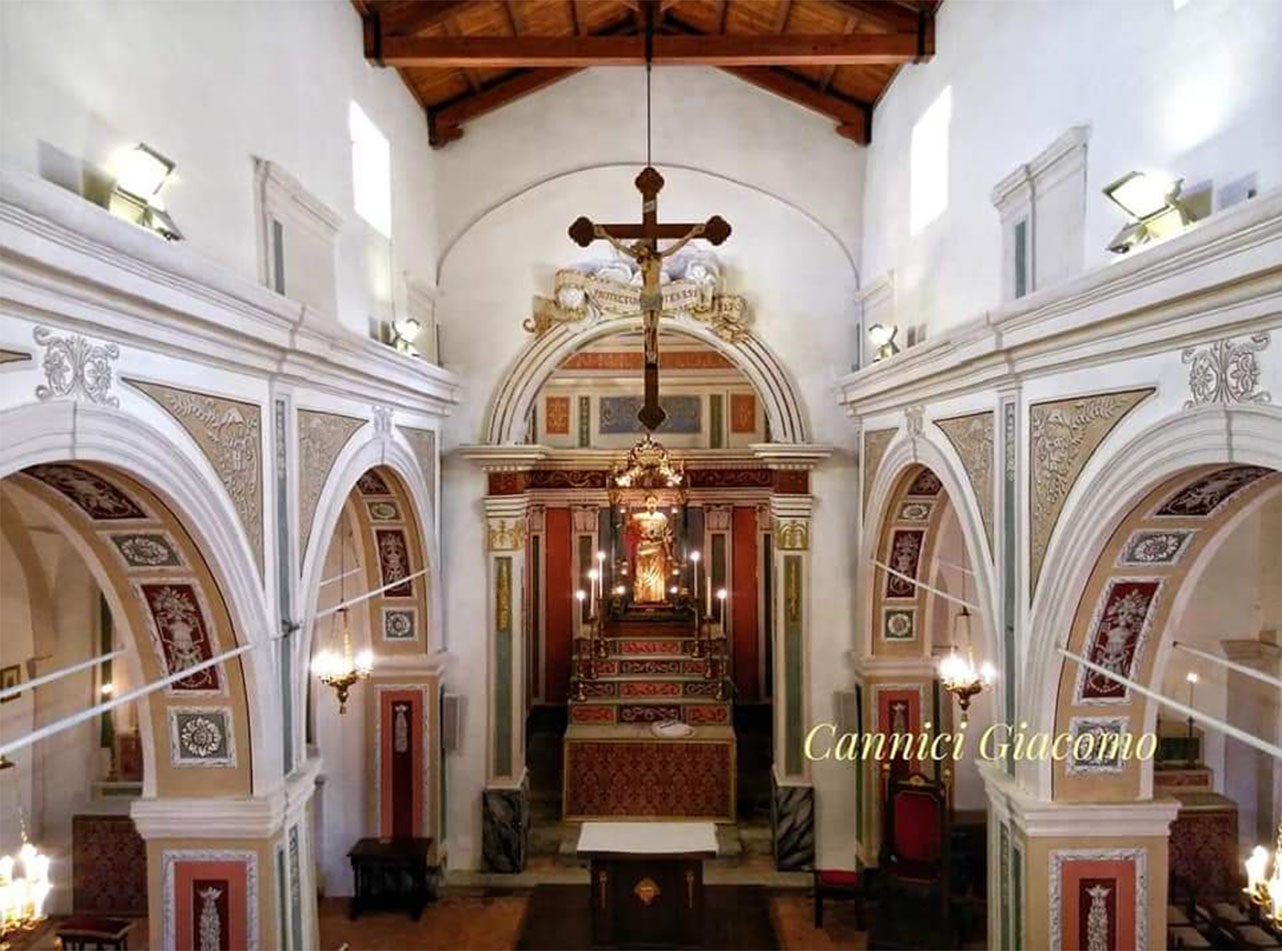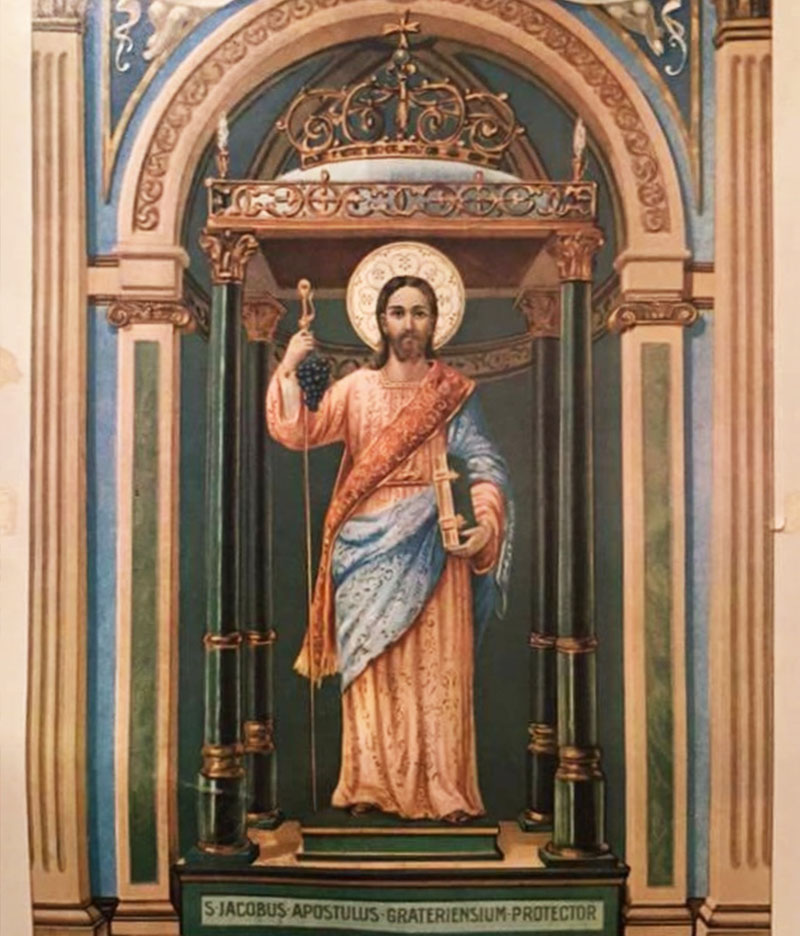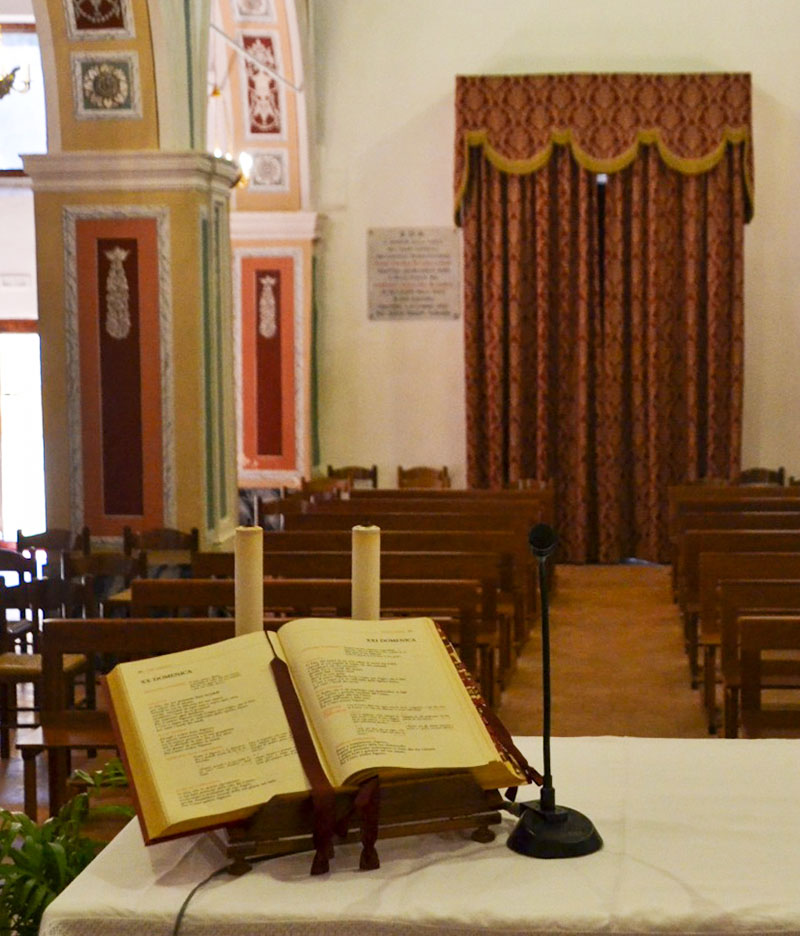The wooden simulacrum of St. Giacomo, covered in pure gold, has a small iron dome on its top, which is supported by small columns and ending with an eight-pointed star in Spanish style. The weight of the “fercolo”, according to popular rumours, is about 18 càntari, or 3174,657 pounds.
The image of the Apostle is represented in an upright position. Under his left arm he has the Gospel, that testifies the word of God and in his right hand he holds the pilgrim’s stick in which the cockade and two bronze keys are tied to symbolize his role as guardian of the village, in fact on the scroll of the nave it still reads: “Protector noster est pr. 3220” (He is our Protector, Psalm 32, 20).
From the inventory of the movable property of the church of San Giacomo, drawn up in 1910 by the vicar Sacred Procurator A.Chichi, it can be read that the statue of St. Giacomo was made in 1600, restored and gilded in 1897 (Di Francesca 2000).
This sculpture is strongly expressive and Pitrè himself describes it as follows: “St. Giacomo is a statue in its natural state, with a red face and black, sharp eyes that strike fear into the beholder” (Pitrè 1881).
According to the tradition, the devotion of Gratteri originates from the help that the saint gave to Roger the Norman in the fight “against the Saracens to free Gratteri from their hated oppression”. After this episode, around 1150, Roger himself wanted to give to the Lords of Gratteri the relic, a fragment of bone from the ribs of St. Giacomo (Scelsi 1981; Villa Bianca – Brochures – Q.q. E 102, Bibli. Com.le di Palermo).
In 1597 this relic is already mentioned in an inventory of the Mother Church and it is kept in a small silver box together with other relics (Anselmo-Margiotta 2005).



